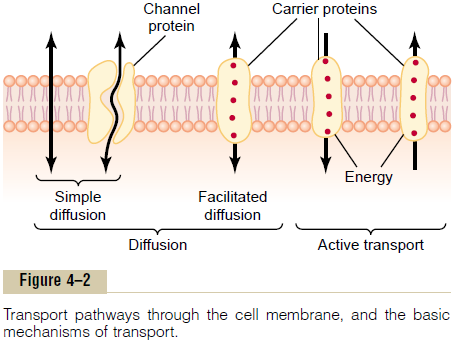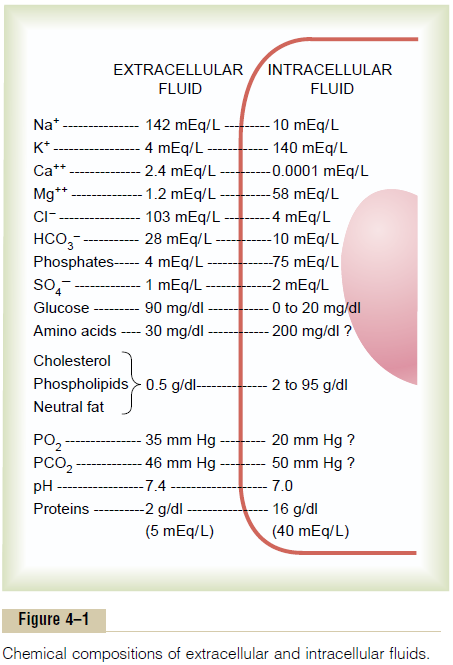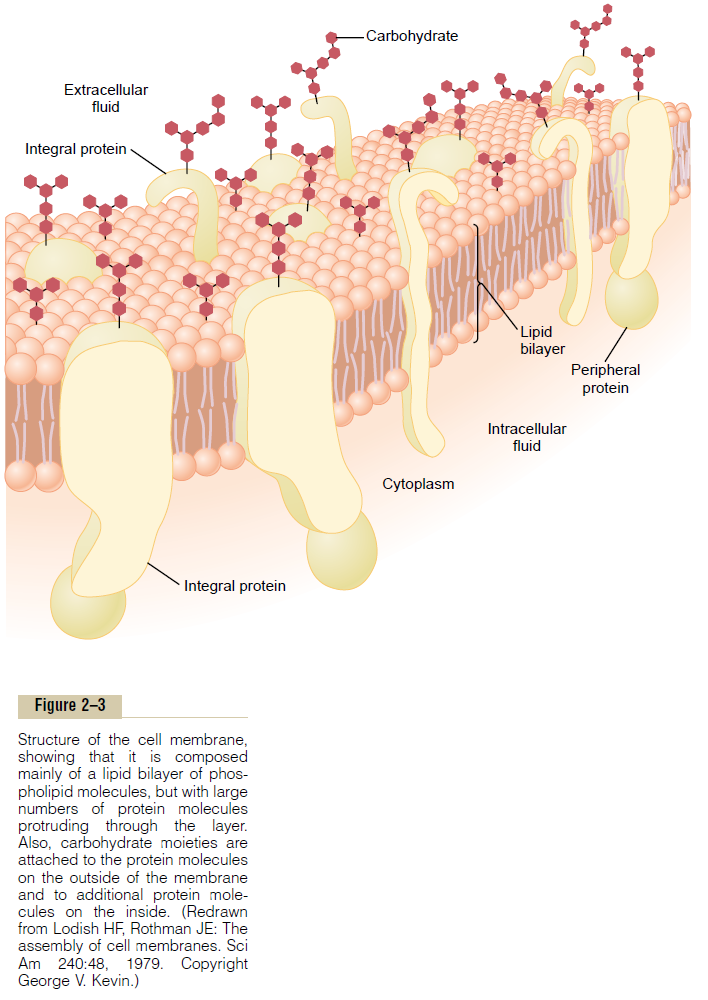Chapter: Medical Physiology: Membrane Physiology, Nerve, and Muscle : Transport of Substances Through the Cell Membrane
The Lipid Barrier of the Cell Membrane, and Cell Membrane Transport Proteins
The Lipid Barrier of the Cell Membrane, and Cell Membrane Transport Proteins
The structure of the membrane covering the outside of every cell of the body is discussed and illustrated in Figures 2–3 and 4–2. This membrane consists almost entirely of a lipid bilayer, but it also contains large numbers of protein molecules in the lipid, many of which penetrate all the way through the membrane, as shown in Figure 4–2.

The lipid bilayer is not miscible with either the extracellular fluid or the intra-cellular fluid. Therefore, it constitutes a barrier against movement of water molecules and water-soluble substances between the extracellular and intracel-lular fluid compartments. However, as demonstrated in Figure 4–2 by the left-most arrow, a few substances can penetrate this lipid bilayer, diffusing directly through the lipid substance itself; this is true mainly of lipid-soluble substances, as described later.


The protein molecules in the membrane have entirely different properties for transporting substances. Their molecular structures interrupt the continuity of the lipid bilayer, constituting an alternative pathway through the cell mem-brane. Most of these penetrating proteins, therefore, can function as transportproteins. Different proteins function differently. Some have watery spaces allthe way through the molecule and allow free movement of water as well as selected ions or molecules; these are called channel proteins.Others, called carrier proteins, bind with molecules or ions that are to be transported; confor-mational changes in the protein molecules then move the substances through the interstices of the protein to the other side of the membrane. Both the channel proteins and the carrier proteins are usually highly selective in the types of molecules or ions that are allowed to cross the membrane.
“Diffusion” Versus “Active Transport.” Transport through the cell membrane, eitherdirectly through the lipid bilayer or through the proteins, occurs by one of two basic processes: diffusion or active transport.
Although there are many variations of these basic mechanisms, diffusion means random molecular movement of substances molecule by molecule, either through intermolecular spaces in the membrane or in combination with a carrier protein. The energy that causes diffusion is the energy of the normal kinetic motion of matter.
By contrast, active transport means movement of ions or other substances across the membrane in com-bination with a carrier protein in such a way that the carrier protein causes the substance to move against an energy gradient, such as from a low-concentration state to a high-concentration state. This movement requires an additional source of energy besides kinetic energy. Following is a more detailed explanation of the basic physics and physical chemistry of these two processes.
Related Topics